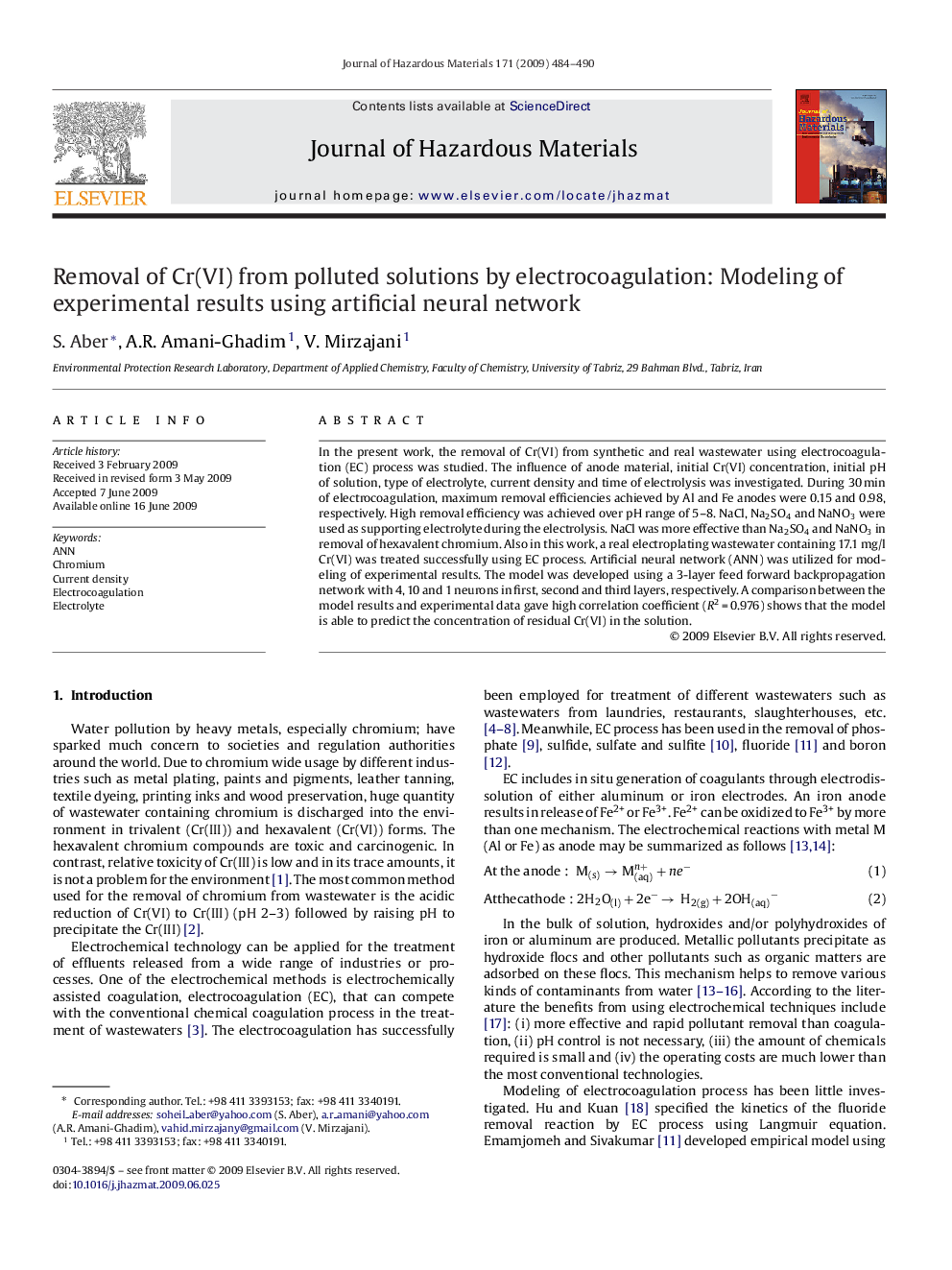| Article ID | Journal | Published Year | Pages | File Type |
|---|---|---|---|---|
| 581162 | Journal of Hazardous Materials | 2009 | 7 Pages |
Abstract
In the present work, the removal of Cr(VI) from synthetic and real wastewater using electrocoagulation (EC) process was studied. The influence of anode material, initial Cr(VI) concentration, initial pH of solution, type of electrolyte, current density and time of electrolysis was investigated. During 30Â min of electrocoagulation, maximum removal efficiencies achieved by Al and Fe anodes were 0.15 and 0.98, respectively. High removal efficiency was achieved over pH range of 5-8. NaCl, Na2SO4 and NaNO3 were used as supporting electrolyte during the electrolysis. NaCl was more effective than Na2SO4 and NaNO3 in removal of hexavalent chromium. Also in this work, a real electroplating wastewater containing 17.1Â mg/l Cr(VI) was treated successfully using EC process. Artificial neural network (ANN) was utilized for modeling of experimental results. The model was developed using a 3-layer feed forward backpropagation network with 4, 10 and 1 neurons in first, second and third layers, respectively. A comparison between the model results and experimental data gave high correlation coefficient (R2Â =Â 0.976) shows that the model is able to predict the concentration of residual Cr(VI) in the solution.
Related Topics
Physical Sciences and Engineering
Chemical Engineering
Chemical Health and Safety
Authors
S. Aber, A.R. Amani-Ghadim, V. Mirzajani,
